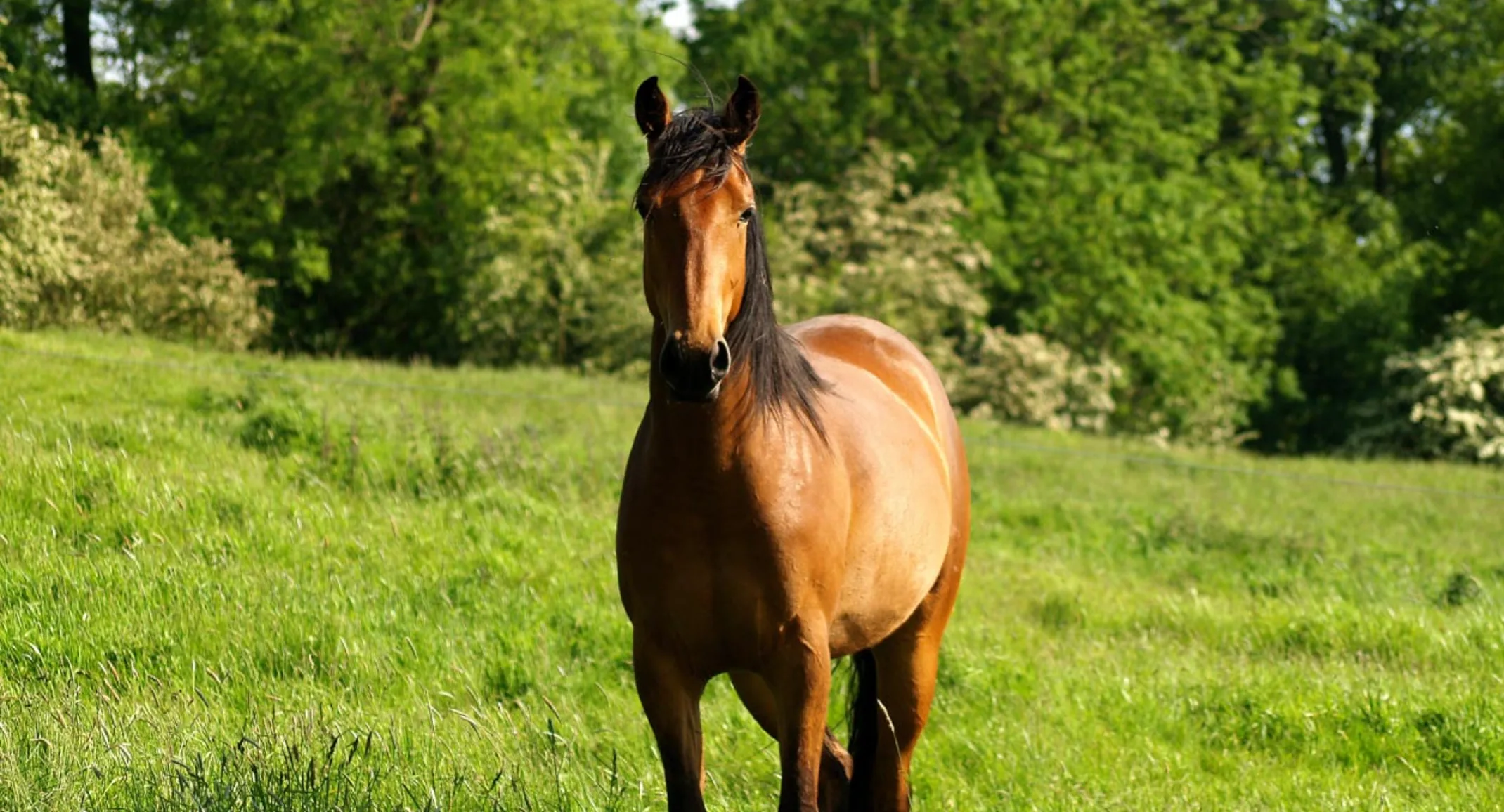Equine Sand Colic – A Dirty Situation
Equine

Many people find the sounds of waves moving across sandy beaches on a nice comfortable vacation enjoyable, but hearing them with a stethoscope on a horse’s abdomen is no vacation and certainly not comfortable for the horse. Sand colic is one of many forms of colic that owners should be aware of because it can be very preventable that every horse owner can address easily at the farm.
Sand colic is an accumulation of sand, dirt or gravel that the horse ingests over a short or long period of time. The sand accumulates typically in the large colon of the horse where it can lead to colonic irritation (colitis), abnormal colon motility and obstruction similar to an impaction. All age groups of horses are susceptible to sand colic, but younger horses are more likely to preferentially ingest sand or dirt. Sandy loose soil or small gravel landscape that the horses are housed in can predispose horses to sand colic especially if the horses are fed on the ground or if the horses are prone to dropping feed on the ground and then they proceed to eat the feed from the ground.
Clinical Signs
A horse suffering from sand colic cannot be differentiated from other forms of colic without a clear history from the owner or without performing diagnostic tests. Horses can display a large range of clinical signs from horse to horse depending on the severity of sand accumulated in the colon or if there are secondary complications associated with the sand colic. Common clinical signs can be lethargy, inappetence and loose manure or diarrhea. Of course when the horse becomes painful, classic signs of colic are seen such as rolling, pawing, getting up and down frequently, flank watching or stretching out. Again these signs can overlap with many causes of colic so further work up is needed to determine the cause of the colic symptoms.
Diagnosis
Sand colic typically can be diagnosed multiple different ways. Auscultation of the very lowest point of the abdomen over the large colon can produce a distinct sound that sounds similar to ocean waves or water rushing over sand. Ultrasound can help make the diagnosis, but it can be difficult to differentiate the type of material present in the colon. Suspending the manure with water in a clear plastic bag or rectal sleeve will allow separation of the sand from the manure to help increase the suspicion of sand colic. Rectal exam can also lead to suspicion or diagnosis of sand colon. A definitive diagnosis of sand colic is made by taking an x-ray or radiograph of the abdomen. Sand or gravel will be detected on an x-ray and also can be used to measure the severity or amount of sand accumulation in the colon. A radiograph can also be used to monitor progress of treatment allowing quantification of the amount of sand being removed from the colon over time, which is rather helpful to determine progress of the treatment.
Treatment
Depending on the severity of the sand colic, amount of sand in the colon or the systemic health of the horse there are a few treatment options. If the horse’s pain level cannot be controlled, improvement with other treatments fail or the horse is systemically compromised, surgery is indicated to removed the sand impaction and correct other abnormalities that may occur secondarily to the sand impaction. If the horse’s pain can be controlled and is able to maintain normal motility or passage of ingesta through the colon, medical treatment can be successful at treating sand impactions. Medical treatment typically requires IV fluids, pro-motility drugs and administration of mineral oil with psyllium (Metamucil) to help clear the sand from the colon. Research studies have indicated that the combination of mineral oil and psyllium had the fastest resolution of sand from the colon when monitored with radiographic measurements of sand in the colon.
Prevention
Basic steps can be taken to reduce the risk of horses developing sand colic at home. First step is to monitor the horse’s behavior to assess if they are horses that are messy eaters and like to scrounge for scraps of food off the ground. Evaluate the housing situation the horse is in and the soil type that is present on the farm. Keep horses from dropping feed on the ground by feeding in raised feed bunks or feeding on rubber mats can help mitigate the amount of sand or dirt ingested. In horses where environment cannot be easily controlled, feeding intermittent psyllium products such as sand clear will help removed accumulated sand in the large colon before it causes sand colic. Recommendation is to feed psyllium one week out of every mouth to help reduced the risk of sand colic.
While it is rather difficult to control everything in your horses’ daily lives or control every environmental factor, steps can be taken to help reduce the risk of this particular cause of colic. Recognizing signs of colic quickly and seeking veterinary care is always a good idea no matter the cause of the colic symptoms.
